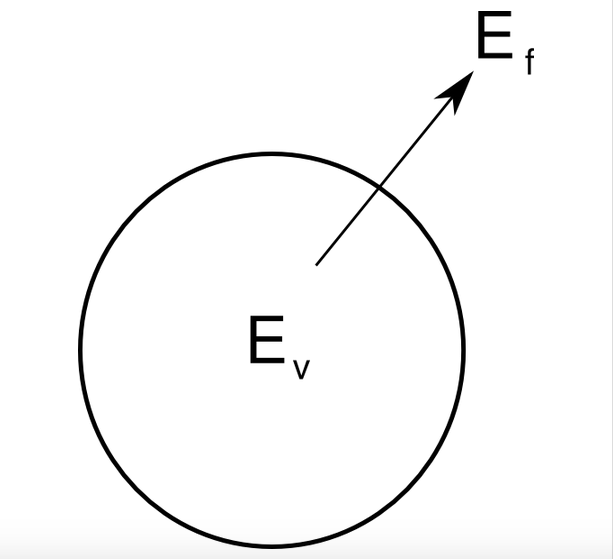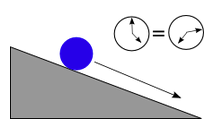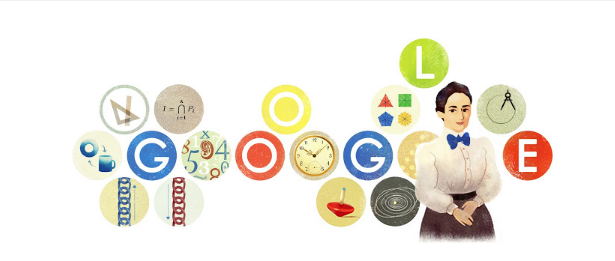THREE PHYSICISTS WHO have been collaborating in the San Francisco Bay Area over the past year have devised a new solution to a mystery that has beleaguered their field for more than 30 years. This profound puzzle, which has driven experiments at increasingly powerful particle colliders and given rise to the controversial multiverse hypothesis, amounts to something a bright fourth-grader might ask: How can a magnet lift a paperclip against the gravitational pull of the entire planet?
Despite its sway over the motion of stars and galaxies, the force of gravity is hundreds of millions of trillions of trillions of times weaker than magnetism and the other microscopic forces of nature. This disparity shows up in physics equations as a similarly absurd difference between the mass of the Higgs boson, a particle discovered in 2012 that controls the masses and forces associated with the other known particles, and the expected mass range of as-yet-undiscovered gravitational states of matter.
In the absence of evidence from Europe’s Large Hadron Collider (LHC) supporting any of the theories previously proposed to explain this preposterous mass hierarchy—including the seductively elegant “supersymmetry”—many physicists have come to doubt the very logic of nature’s laws. Increasingly, they worry that our universe might just be a random, rather bizarre permutation among uncountable other possible universes—an effective dead end in the quest for acoherent theory of nature.
This month, the LHC launched its eagerly anticipated second run at nearly double its previous operating energy, continuing its pursuit of new particles or phenomena that would solve the hierarchy problem. But the very real possibility that no new particles lie around the corner has left theoretical physicists facing their “nightmare scenario.” It has also gotten them thinking.
“It is in moments of crisis that new ideas develop,” saidGian Giudice, a theoretical particle physicist at the CERN laboratory near Geneva, which houses the LHC.
The new proposal offers a possible way forward. The trio is “super excited,” said David Kaplan, 46, a theoretical particle physicist from Johns Hopkins University in Baltimore, Md., who developed the model during a West Coast sabbatical with Peter Graham, 35, of Stanford University and Surjeet Rajendran, 32, of the University of California, Berkeley.
Their solution traces the hierarchy between gravity and the other fundamental forces back to the explosive birth of the cosmos, when, their model suggests, two variables that were evolving in tandem suddenly deadlocked. At that instant, a hypothetical particle called the “axion” locked the Higgs boson into its present-day mass, far below the scale of gravity. The axion has appeared in theoretical equations since 1977 and is deemed likely to exist. Yet no one, until now, noticed that axions could be what the trio calls “relaxions,” solving the hierarchy problem by “relaxing” the value of the Higgs mass.
“It’s a very, very clever idea,” said Raman Sundrum, a theoretical particle physicist at the University of Maryland in College Park who was not involved in developing it. “Possibly some version of that is the way the world works.”
In the weeks since the trio’s paper appeared online, it has opened up “a new playground” populated with researchers eager to revise its weaknesses and take its basic premise in different directions, said Nathaniel Craig, a theoretical physicist at the University of California, Santa Barbara.
“This just seems like a pretty simple possibility,” Rajendran said. “We’re not standing on our heads to do something crazy here. It just wants to work.”
However, as several experts noted, in its current form the idea has shortcomings that will need to be carefully considered. And even if it survives this scrutiny, it could take more than a decade to test experimentally. For the time being, experts said, the relaxion is shaking up longheld views and encouraging some physicists to see the hierarchy problem in a new light. The lesson, saidMichael Dine, a physicist at the University of California, Santa Cruz, and a veteran of the hierarchy problem, is “not to just give up and assume that we won’t be able to figure it out.”
An Unnatural Balance
For all the revelry surrounding the 2012 discovery of the Higgs boson, which completed the “Standard Model” of particle physics and earned Peter Higgs and François Englert the 2013 Nobel Prize in physics, it came as little surprise; the particle’s existence and measured mass of 125 giga-electron volts (GeV) agreed with years of indirect evidence. It’s what wasn’t found at the LHC that left experts baffled. Nothing showed up that could reconcile the Higgs mass with the predicted mass scale associated with gravity, which lies beyond experimental reach at 10,000,000,000,000,000,000 GeV.
 Click to Open Overlay Gallery
Click to Open Overlay Gallery“The issue is that in quantum mechanics, everything influences everything else,” Giudice explained. The super-heavy gravitational states should mingle quantum mechanically with the Higgs boson, contributing huge factors to the value of its mass. Yet somehow, the Higgs boson ends up lightweight. It’s as if all the gargantuan factors affecting its mass—some positive, others negative, but all dozens of digits long—have magically canceled out, leaving an extraordinarily tiny value behind. The improbably fine-tuned cancellation of these factors seems “suspicious,” Giudice said. “You think, well, there must be something else behind it.”
Experts often compare the finely tuned Higgs mass to a pencil standing on its lead tip, nudged this way and that by powerful forces like air currents and table vibrations that have somehow struck a perfect balance. “It is not a state of impossibility; it is a state of extremely small likelihood,” said Savas Dimopoulos of Stanford. If you came across such a pencil, he said, “you would first move your hand over the pencil to see if there was any string holding it from the ceiling. [Next] you would look at the tip to see if there is chewing gum.”
Physicists have similarly sought a natural explanation for the hierarchy problem since the 1970s, confident that the search would lead them toward a more complete theory of nature, perhaps even turning up the particles behind “dark matter,” the invisible substance that permeates galaxies. “Naturalness has really been the leitmotif of that research,” Giudice said.
Since the 1980s, the most popular proposal has been supersymmetry. It solves the hierarchy problem by postulating a yet-to-be-discovered twin for each elementary particle: for the electron, a hypothetical “selectron,” for each quark, a “squark,” and so on. Twins contribute opposite terms to the mass of the Higgs boson, rendering it immune to the effects of super-heavy gravity particles (since they are nullified by the effects of their twins).
But no evidence for supersymmetry or for any competing ideas—such as “technicolor” and “warped extra dimensions”—turned up during the first run of the LHC from 2010 to 2013. When the collider shut down for upgrades in early 2013 without having found a single “sparticle” or any other sign of physics beyond the Standard Model, many experts felt they could no longer avoid contemplating a stark alternative. What if the Higgs mass, and by implication the laws of nature, are unnatural? Calculations show that if the mass of the Higgs boson were just a few times heavier and everything else stayed the same, protons could no longer assemble into atoms, and there would be no complex structures—no stars or living beings. So, what if our universe really is as accidentally fine-tuned as a pencil balanced on its tip, singled out as our cosmic address from an inconceivably vast array of bubble universes inside an eternally frothing “multiverse” sea simply because life requires such an outrageous accident to exist?
This multiverse hypothesis, which has loomed over discussions of the hierarchy problem since the late 1990s, is seen as a bleak prospect by most physicists. “I just don’t know what to do with it,” Craig said. “We don’t know what the rules are.” Other bubbles of the multiverse, if they exist, lie beyond the boundaries of light communication, forever limiting theories about the multiverse to what we can observe from within our lonely bubble. With no way to tell where our data point lies on the vast spectrum of possibilities in a multiverse, it becomes difficult or impossible to construct multiverse-based arguments about why our universe is the way it is. “I don’t know at what point we would ever be convinced,” Dine said. “How would you settle it? How would you know?”
The Higgs and the Relaxion
Kaplan visited the Bay Area last summer to collaborate with Graham and Rajendran, whom he knew because all three had worked at various times under Dimopoulos, who was one of the key developers of supersymmetry. Over the past year the trio split their time between Berkeley and Stanford—and the various coffee shops, lunch spots and ice cream parlors bordering both campuses—exchanging “embryonic bits of the idea,” Graham said, and gradually developing a new origin story for the laws of particle physics.
Inspired by a 1984 attempt by Larry Abbott to address a different naturalness problem in physics, they sought to recast the Higgs mass as an evolving parameter, one that could dynamically “relax” to its tiny value during the birth of the cosmos rather than starting out as a fixed, seemingly improbable constant. “Though it took six months of dead ends and really stupid models and very baroque, complicated things, we ended up landing on this very simple picture,” Kaplan said.
In their model, the Higgs mass depends on the numerical value of a hypothetical field that permeates space and time: an axion field. To picture it, “we think of the totality of space as being this 3-D mattress,” Dimopoulos said. The value at each point in the field corresponds to how compressed the mattress springs are there. It has long been recognized that the existence of this mattress—and its vibrations in the form of axions—could solve two deep mysteries: First, the axion field would explain why most interactions between protons and neutrons run both forward and backward, solving what’s known as the “strong CP” problem. And axions could make up dark matter. Solving the hierarchy problem would be a third impressive achievement.
The story of the new model begins when the cosmos was an energy-infused dot. The axion mattress was extremely compressed, which made the Higgs mass enormous. As the universe expanded, the springs relaxed, as if their energy were spreading through the springs of the newly created space. As the energy dissipated, so did the Higgs mass. When the mass fell to its present value, it caused a related variable to plunge past zero, switching on the Higgs field, a molasseslike entity that gives mass to the particles that move through it, such as electrons and quarks. Massive quarks in turn interacted with the axion field, creating ridges in the metaphoric hill that its energy had been rolling down. The axion field got stuck. And so did the Higgs mass.
In what Sundrum called a radical break from past models, the new one shows how the modern-day mass hierarchy might have been sculpted by the birth of the cosmos. “The fact that they’ve put equations to this in a realistic sense is really remarkable,” he said.
Dimopoulos remarked on the striking minimalism of the model, which employs mostly pre-established ideas. “People like myself who have invested quite a bit on these other approaches to the hierarchy problem were very happily surprised that you don’t have to look very far,” he said. “In the backyard of the Standard Model, the solution was there. It took very clever young people to realize that.
“This elevates the stock price of the axion,” he added. Recently, the Axion Dark Matter eXperiment at the University of Washington in Seattle began looking for the rare conversions of dark matter axions into light inside strong magnetic fields. Now, Dimopoulos said, “We should look even harder to find it.”
However, like many experts, Nima Arkani-Hamed of the Institute for Advanced Study in Princeton, N.J., noted that it’s early days for this proposal. While “it’s definitely clever,” he said, its current implementation is far-fetched. For example, in order for the axion field to have gotten stuck on the ridges created by the quarks rather than rolling past them, cosmic inflation must have progressed much more slowly than most cosmologists have assumed. “You add 10 billion years of inflation,” he said. “You have to wonder why all of cosmology arranges itself just to make this happen.”
And even if the axion is discovered, that alone wouldn’t prove it is the “relaxion”—that it relaxes the value of the Higgs mass. As Kaplan’s stay in the Bay Area winds down, he, Graham and Rajendran are beginning to develop ideas for how to test that aspect of their model. It might eventually be possible to oscillate an axion field, for example, to see whether this affects the masses of nearby elementary particles, by way of the Higgs mass. “You would see the electron mass wiggling,” Graham said.
These tests of the proposal will not happen for many years. (The model doesn’t predict any new phenomena that the LHC would detect.) And realistically, several experts said, it faces long odds. So many clever proposals have failed over the years that many physicists are reflexively skeptical. Still, the intriguing new model is delivering a timely dose of optimism.
“We thought we had thought of everything and there was nothing new under the sun,” Sundrum said. “What this shows is that humans are pretty smart and there’s still room for new breakthroughs.”
Editor’s Note: David Kaplan hosts Quanta Magazine’sIn Theory video series.
Original story reprinted with permission from Quanta Magazine, an editorially independent publication of theSimons Foundation whose mission is to enhance public understanding of science by covering research developments and trends in mathematics and the physical and life sciences.
Source: http://www.wired.com/2015/06/new-theory-explain-higgs-mass/








